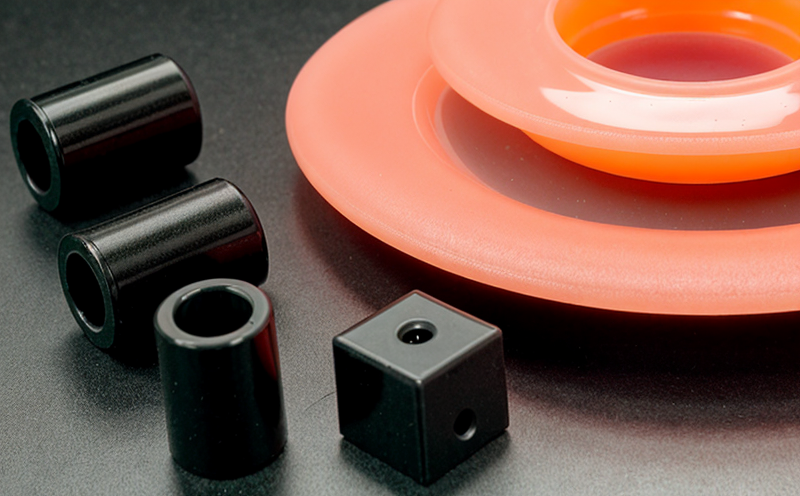DIN 18032 Shock Absorption Testing of Sports Floor Plastics
The DIN 18032 standard is a crucial aspect of ensuring the safety and quality of sports floors, particularly in facilities where high-impact activities occur. This test evaluates the shock absorption properties of plastics used in sports flooring to determine their ability to dissipate energy during impact, thereby reducing the risk of injury to athletes.
The testing method outlined in DIN 18032 involves measuring the deflection under a specified load and subsequent recovery behavior. The standard specifies precise conditions for specimen preparation, including the dimensions and shape of the test samples. This ensures that all tests conducted are comparable and reproducible, which is essential for maintaining consistency across different laboratories.
The apparatus required for this testing includes a shock absorber testing machine capable of applying consistent loads to the sample. The machine must be calibrated according to ISO standards to ensure accuracy in load application. Additionally, the environment conditions such as temperature and humidity must be controlled to prevent any external factors from influencing the test results.
Specimen preparation is critical for DIN 18032 testing. Samples are cut into specified dimensions, typically square or rectangular shapes with uniform thickness throughout. The samples should not have any visible defects that could affect their performance during testing. Once prepared, these samples undergo conditioning to stabilize them before the test begins.
The testing process itself involves applying a predetermined load to the sample and measuring its deflection at various points along its length or width. After reaching maximum deformation, the load is removed, and the sample's recovery behavior is observed over time. The key parameters measured include peak deflection, residual deflection, and recovery percentage.
These measurements provide valuable insights into how well the material can absorb shock and return to its original shape after impact. This information is crucial for manufacturers of sports floors as it helps them optimize their product designs to meet both performance standards and safety requirements set by international bodies like FIFA or ASTM.
Incorporating DIN 18032 into the design process allows companies to identify potential issues early on, ensuring that any necessary adjustments can be made before production begins. By adhering closely to this standard during development stages, manufacturers can ensure their products meet stringent safety criteria and gain international recognition.
Moreover, compliance with DIN 18032 enhances brand reputation by demonstrating a commitment to quality and safety. It also opens up opportunities for exporting products internationally since many countries around the world recognize standards like those defined in DIN 18032 as being authoritative within their respective industries.
- International Acceptance: DIN 18032 has gained widespread acceptance among sporting goods manufacturers and facilities worldwide. Its rigorous testing protocols ensure that all materials used in sports flooring are safe and effective at reducing injuries caused by impacts during play.
Benefits
The implementation of DIN 18032 shock absorption tests offers numerous advantages for both manufacturers and end users. For producers, it provides a competitive edge by setting them apart from competitors who may not adhere to such stringent quality control measures.
From an end-user perspective, compliance with this standard translates into safer playing surfaces that contribute significantly to injury prevention efforts. The reduced risk of slips, trips, and falls makes indoor sports facilities more appealing for both participants and spectators alike.
Customer Impact and Satisfaction
Achieving compliance with DIN 18032 not only enhances customer confidence but also fosters long-term relationships built on trust and reliability. When customers know that they are investing in products that meet or exceed industry benchmarks, satisfaction levels naturally increase.
This increased satisfaction extends beyond just the product itself; it encompasses the overall experience associated with purchasing goods from a reputable supplier who consistently delivers high-quality outcomes. As a result, businesses operating within this sector can expect higher customer loyalty rates and positive reviews.





